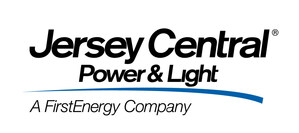FirstEnergy Invested $119 Million in the Potomac Edison Service Area in 2015 to Enhance Electric System
Company Completed Infrastructure and Reliability Projects to Help Reduce Outages and Handle Future Growth
WILLIAMSPORT, Md., Jan. 27, 2016 /PRNewswire/ -- FirstEnergy Corp. (NYSE: FE) invested $119 million in 2015 in the Potomac Edison service area on infrastructure projects and other work, including building new transmission lines, new substations, and installing remote-control equipment as part of its ongoing efforts to enhance the reliability of its electric system.
"The infrastructure projects we completed in 2015 and in previous years are making a difference when it comes to making our system more robust," said James A. Sears, Jr., president of FirstEnergy's Maryland Operations and vice president of Potomac Edison. "Results showed that Potomac Edison customers experienced fewer outages in 2015 than the year before, and when outages did occur, they were shorter than in the previous year."
Some of the key FirstEnergy projects in Potomac Edison's service area in 2015 include:
- Completing a $34 million substation expansion in eastern Frederick County, which included installation of voltage regulating equipment, to help reinforce the regional transmission system and enhance electric service reliability for about 125,000 Potomac Edison customers in Frederick, eastern Frederick County and western Montgomery County.
- Replacing the wire on three transmission lines at a cost of more than $6 million, including about 14 miles of a line between Millville and Old Chapel substations; three miles of a line between Bartonville and Stephenson substations; and two miles on another line between Stephenson and Stonewall substations. The work will help reinforce the transmission system in Jefferson County, W.Va., benefitting about 26,000 customers.
- Upgrading equipment on about 260 distribution circuits throughout Potomac Edison's service area at an estimated cost of $10.2 million. The work – installing new wire, cable and fuses – reinforces the electrical system and enhances reliability for nearly 200,000 customers in Maryland and West Virginia.
- Reconductoring five miles of an existing line with heavier wire to enhance electric service reliability for more than 1,400 customers in New Windsor, Md. at a cost of about $1.1 million.
- Building a new distribution line in Hampshire County, W.Va., at a cost of about $300,000, to enhance service reliability for more than 2,000 customers in the north-central section of the county.
- Replacing underground distribution cables with new equipment. Work totaled more than $3.4 million across the service territory, with a focus in Frederick and Montgomery counties Maryland.
- Spending $1.7 million to inspect about 36,000 utility poles throughout Potomac Edison's service area and proactively replace about 250.
About $21 million of the total was spent on transmission-related projects owned by the Trans-Allegheny Interstate Line Company (TrAILCo), a FirstEnergy transmission company.
Planning is continuing for additional projects that are expected to be completed in 2016, including new substations, transmission lines and circuit upgrades.
Potomac Edison also began using two new apps in 2015 to more efficiently assess damage to the electrical system and dispatch crews to make repairs in the wake of major storm events. Employees in the field can use this new mobile device technology to automatically enter damage information into the company's outage management system which helps restore the most customers to service in the shortest amount of time.
In 2015, Potomac Edison also continued its Power Systems Institute program to train future line workers. The program combines learning hands-on utility skills at company training facilities with technical coursework at Blue Ridge Community and Technical College in Martinsburg, W. Va. Recruiting efforts are underway for the next class that will begin school this fall. Information about the Power Systems Institute is available at www.firstenergycorp.com/psi or by calling 800-829-6801.
Potomac Edison serves about 250,000 customers in seven Maryland counties and 132,000 customers in the Eastern Panhandle of West Virginia. Follow Potomac Edison on Twitter @PotomacEdison.
FirstEnergy is a diversified energy company dedicated to safety, reliability and operational excellence. Its 10 electric distribution companies form one of the nation's largest investor-owned electric systems, serving customers in Ohio, Pennsylvania, New Jersey, West Virginia, Maryland and New York. The company's transmission subsidiaries operate more than 24,000 miles of transmission lines that connect the Midwest and Mid-Atlantic regions, while its generation subsidiaries control nearly 17,000 megawatts of capacity from a diversified mix of scrubbed coal, non-emitting nuclear, natural gas, hydro and other renewables. Visit FirstEnergy online at www.firstenergycorp.com and follow on Twitter at @FirstEnergyCorp.
Editor's Note: A photo of service reliability work that was done at a Potomac Edison substation in Frederick County, Maryland, is available for download on Flickr.
Forward-Looking Statements: This news release includes forward-looking statements based on information currently available to management. Such statements are subject to certain risks and uncertainties. These statements include declarations regarding management's intents, beliefs and current expectations. These statements typically contain, but are not limited to, the terms "anticipate," "potential," "expect," "forecast," "target," "will," "intend," "believe," "project," "estimate," "plan" and similar words. Forward-looking statements involve estimates, assumptions, known and unknown risks, uncertainties and other factors that may cause actual results, performance or achievements to be materially different from any future results, performance or achievements expressed or implied by such forward-looking statements, which may include the following: the speed and nature of increased competition in the electric utility industry, in general, and the retail sales market in particular; the ability to experience growth in the Regulated Distribution and Regulated Transmission segments and to successfully implement our revised sales strategy for the Competitive Energy Services segment; the accomplishment of our regulatory and operational goals in connection with our transmission investment plan, including but not limited to, our pending transmission rate case, the proposed transmission asset transfer, and the effectiveness of our repositioning strategy to reflect a more regulated business profile; changes in assumptions regarding economic conditions within our territories, assessment of the reliability of our transmission system, or the availability of capital or other resources supporting identified transmission investment opportunities; the impact of the regulatory process on the pending matters at the federal level and in the various states in which we do business including, but not limited to, matters related to rates and the Electric Security Plan IV in Ohio; the impact of the federal regulatory process on the Federal Energy Regulatory Commission (FERC)-regulated entities and transactions, in particular FERC regulation of wholesale energy and capacity markets, including PJM Interconnection, L.L.C. (PJM) markets and FERC-jurisdictional wholesale transactions; FERC regulation of cost-of-service rates, including FERC Opinion No. 531's revised Return on Equity methodology for FERC-jurisdictional wholesale generation and transmission utility service; and FERC's compliance and enforcement activity, including compliance and enforcement activity related to North American Electric Reliability Corporation's mandatory reliability standards; the uncertainties of various cost recovery and cost allocation issues resulting from American Transmission Systems, Incorporated's realignment into PJM; economic or weather conditions affecting future sales and margins such as a polar vortex or other significant weather events, and all associated regulatory events or actions; changing energy, capacity and commodity market prices including, but not limited to, coal, natural gas and oil, and their availability and impact on margins and asset valuations; the continued ability of our regulated utilities to recover their costs; costs being higher than anticipated and the success of our policies to control costs and to mitigate low energy, capacity and market prices; other legislative and regulatory changes, and revised environmental requirements, including, but not limited to, the effects of the United States Environmental Protection Agency's Clean Power Plan, coal combustion residuals regulations, Cross-State Air Pollution Rule and Mercury and Air Toxics Standards programs, including our estimated costs of compliance, Clean Water Act waste water effluent limitations for power plants, and Clean Water Act 316(b) water intake regulation; the uncertainty of the timing and amounts of the capital expenditures that may arise in connection with any litigation, including New Source Review litigation, or potential regulatory initiatives or rulemakings (including that such initiatives or rulemakings could result in our decision to deactivate or idle certain generating units); the uncertainties associated with the deactivation of certain older regulated and competitive fossil units, including the impact on vendor commitments, and as they relate to the reliability of the transmission grid, the timing thereof; the impact of other future changes to the operational status or availability of our generating units and any capacity performance charges associated with unit unavailability; adverse regulatory or legal decisions and outcomes with respect to our nuclear operations (including, but not limited to the revocation or non-renewal of necessary licenses, approvals or operating permits by the Nuclear Regulatory Commission or as a result of the incident at Japan's Fukushima Daiichi Nuclear Plant); issues arising from the indications of cracking in the shield building at Davis-Besse; the risks and uncertainties associated with litigation, arbitration, mediation and like proceedings, including, but not limited to, any such proceedings related to vendor commitments; the impact of labor disruptions by our unionized workforce; replacement power costs being higher than anticipated or not fully hedged; the ability to comply with applicable state and federal reliability standards and energy efficiency and peak demand reduction mandates; changes in customers' demand for power, including, but not limited to, changes resulting from the implementation of state and federal energy efficiency and peak demand reduction mandates; the ability to accomplish or realize anticipated benefits from strategic and financial goals, including, but not limited to, the ability to continue to reduce costs and to successfully execute our financial plans designed to improve our credit metrics and strengthen our balance sheet through, among other actions, our previously-implemented dividend reduction, our cash flow improvement plan and our other proposed capital raising initiatives; our ability to improve electric commodity margins and the impact of, among other factors, the increased cost of fuel and fuel transportation on such margins; changing market conditions that could affect the measurement of certain liabilities and the value of assets held in our Nuclear Decommissioning Trusts, pension trusts and other trust funds, and cause us and/or our subsidiaries to make additional contributions sooner, or in amounts that are larger than currently anticipated; the impact of changes to material accounting policies; the ability to access the public securities and other capital and credit markets in accordance with our financial plans, the cost of such capital and overall condition of the capital and credit markets affecting us and our subsidiaries; actions that may be taken by credit rating agencies that could negatively affect us and/or our subsidiaries' access to financing, increase the costs thereof, and increase requirements to post additional collateral to support outstanding commodity positions, letters of credit and other financial guarantees; changes in national and regional economic conditions affecting us, our subsidiaries and/or our major industrial and commercial customers, and other counterparties with which we do business, including fuel suppliers; the impact of any changes in tax laws or regulations or adverse tax audit results or rulings; issues concerning the stability of domestic and foreign financial institutions and counterparties with which we do business; the risks associated with cyber-attacks on our electronic data centers that could compromise the information stored on our networks, including proprietary information and customer data; and the risks and other factors discussed from time to time in our United States Securities and Exchange Commission filings, and other similar factors. The foregoing review of factors should not be construed as exhaustive. New factors emerge from time to time, and it is not possible for management to predict all such factors, nor assess the impact of any such factor on FirstEnergy's business or the extent to which any factor, or combination of factors, may cause results to differ materially from those contained in any forward-looking statements. FirstEnergy expressly disclaims any current intention to update, except as required by law, any forward-looking statements contained herein as a result of new information, future events or otherwise.
SOURCE FirstEnergy Corp.
Related Links
WANT YOUR COMPANY'S NEWS FEATURED ON PRNEWSWIRE.COM?
Newsrooms &
Influencers
Digital Media
Outlets
Journalists
Opted In






Share this article